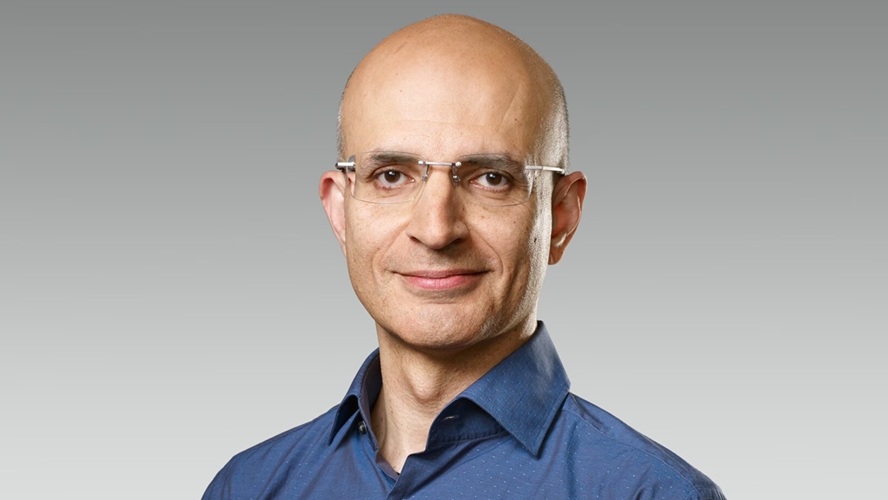By Frank F Islam
“Fly me to the moon
Let me play among the stars
Let me know what spring is like
On a Jupiter and Mars”
Those are the lyrics to a song written by Bart Howard, recorded by Kaye Ballard in 1954 and made popular ten years later by Frank Sinatra.
We don’t think that multi-billionaire Jeff Bezos will be singing these words on July 20 this year as he blasts off into space on his rocket New Shepard, built by his space exploration company Blue Horizon. We do know that in a video posted to Instagram, he said, “If you see the earth from space, it changes you. It changes your relationship with this planet, with humanity. It’s one earth”
Bezos is right: it is one earth. But his relationship with the humanity on this planet changed well before this space adventure. This is the case because the gap between the wealthy in the U.S. and the rest of Americans has grown significantly, and continues to do so.
In fairness, Bezos is not the only billionaire in the space race game. As Laurel Wamsley noted in her NPR article on Bezos’ voyage, “Elon Musk’s SpaceX Crew Dragon now regularly carries astronauts to and from the International Space Station.” And in May, a test flight by Richard Branson’s Virgin Galactic reached an altitude of 55 miles, marking its third human spaceflight. Not to be outdone, Englishman Branson also took his own personal trip into space on July 11 before Bezos’ scheduled July 20 venture.
The Billionaire Gap
Bezos and Musk share another thing in common. They are among a group of the wealthiest Americans who paid little in income taxes in recent years. Thus making them even wealthier.
This was revealed in IRS data obtained by ProPublica, released in a June 8 report written by Jesse Eisinger, Jeff Ernsthausen, and Paul Kiel. The report noted:
In 2007, Jeff Bezos, then a multibillionaire and now the world’s richest man, did not pay a penny in federal income taxes. He achieved the feat again in 2011. In 2018, Tesla founder Elon Musk, the second-richest person in the world, also paid no federal income taxes.
The report also disclosed that Bezos and Musk are among the 25 richest Americans who:
According to Forbes…saw their worth rise a collective $401 billion from 2014 to 2018. They paid a total of $13.6 billion in federal income taxes in those five years, the IRS data shows…[amounting] to a true tax rate of only 3.4%.
By contrast, ProPublica points out, “In recent years, the median American household earned about $70,000 annually and paid 14% in federal taxes.”
The Millionaire Gap
It’s not just the billionaires who are doing much better, it’s also those lowly millionaires who run public companies. In June, Peter Eavis summarized the findings from a comprehensive survey of the pay packages of the 200 highest paid chief executives at public companies, conducted for the New York Times by Equilar, a compensation consulting firm. They included:
CEO’s in 2020 received 274 times the pay of the median employees in their company compared to 245 times in 2019.
CEO pay jumped 14.1 percent compared to 2019 while median workers got only a 1.9 percent raise.
Stan Choe, reviewing data analyzed by Equilar for the Associated Press, reported that:
The median pay package for a CEO at an S&P 500 hit $12.7 million in 2020.
The median pay package was 5 percent more than the median pay for the same group of CEO’s in 2019. This compared to a 4.1 increase in 2019 over 2018.
This widening of the gap between executive pay and working-class pay is nothing new. It has been going on for more than four decades. Studies done by the RAND Corporation and the Economic Policy Institute show the impact in terms of increased pay inequality are stunning.
The RAND working paper found that for the three decades from 1945 through 1974, there was a relatively equitable income distribution across all levels of pay. That changed dramatically in the period from 1975 through 2018.
RAND’s analysis for that period shows that if the distribution had stayed comparable to the post World War II time period:
Workers at the 25th percentile would be earning $61,000 instead of $33,000
Workers at the 75th percentile would be earning $126,000 instead of $81,000
Workers at the 90th percentile would be earning $168,000 instead of $133,000
Workers in the top 1 percent would be earning $549,000 instead of $1.2 million
Tally all of this up and the income reconfiguration, beginning in the mid 70’s, has taken nearly $50 trillion from the bottom 90% and given it to the top 1% of American workers.
The Economic Policy Institute’s (EPI) research reinforces the RAND analysis. A new paper written by Larry Mishel and Josh Bivens, issued in May by EPI, documents that until the late 70s hourly pay and productivity correlated closely. They no longer do.
Between 1979 to 2019, wage growth has been grossly unequal. Over that time period, wages went up as follow:
Bottom 90% = + 26%
90 -99% = + 64%
Top 1% = +160%
Top 0.1% = +345%
If hourly wages had tracked with hourly productivity, the average American worker would be earning $10 more per hour.
The Race and Gender Gap
The inequality and wealth gap is even greater when race and gender are taken into account. Brookings’ Future of the Middle Class Initiative provides a wealth of data on the nature of this inequality, and what to do about it, in its Class Notes newsletters, edited by Richard Reeves, Director of the Initiative.
The Class Notes published on June 24 highlight the following areas of inequality:
There is a “stark” Black-White Gap in multi-generational poverty. Looking back three generations, defining poverty as the bottom fifth of income distribution, just five percent of white adults today are still in poverty after having had poor parents, versus 32 percent of Black adults. And today, one in five Black Americans are experiencing poverty for the third generation in a row, versus one in a hundred white Americans.
The Black middle class has much lower levels of median wealth than those in the white middle class. The median wealth in the top quintile for white wealth distribution is $1,590,000 versus $283,000 for Blacks. A Black family in the middle class would be in the bottom or second lowest quintile of the white distribution.
Black-white wage gaps “remain stubbornly wide”. The Black-white gaps in educational attainment and test scores (human capital) have narrowed, but the share of the earnings gap that can be explained by human capital differences has grown. It the 1960s and 1970s, human capital differences explained 10% of the earnings gap between Blacks and whites. By the 2000s and 2010s it accounted for 30%.
The gender pay gap in 2020 for the median hourly earnings of women held steady at around 84 cents for every dollar earned by men.
To sum it up, the wealth gap in the U.S., deepening through the decades until today, has been much like being in quicksand for the majority of Americans at the bottom. No matter how hard they work and struggle to earn a little more, they continue to sink, while earnings flow disproportionately to those at or near the top of the wealth totem pole who can see and fly sky-high.
Perspectives on Closing the Gap
In 2021, there are indications that some factors might be aligning to enable us to see things differently, and take steps to change this condition. They include: Joe Biden’s perspective as President; Janet Yellen’s perspective serving as Secretary of the Treasury; Jerome H. Powell’s perspective as Federal Reserve Chair; Nancy Pelosi’s perspective as Speaker of the House; and the perspective of Americans in the labor force.
President Biden has been consistent in his messaging, calling for the American economic system to be more inclusive and equitable for all. More importantly, his American Rescue Plan, which has been passed into law, and the Infrastructure (Jobs) Plan and the Families Plan he has proposed were both extremely ambitious in translating rhetoric into recommendations to change the realities of those who are most disadvantaged in the workforce and in America at this time.
It has become obvious that, for a variety of reasons, there will be little to no bipartisan support for the wide-ranging pending proposals. But over the next one and a half years, while Democrats have a majority in the House and a tie in the Senate, they may have the capability to shape and pass legislation that changes the current terrain those in the bottom ninety percent have to travel. Time will tell.
Secretary of Treasury Janet Yellen’s values and priorities square perfectly with those of President Biden. In an interview with Alan Rappeport, conducted before she gave the graduation address to the students at her alma mater Fort Hamilton High School, where she was valedictorian in 1963, Secretary Yellen stated:
Here you have a pandemic that has disproportionately fallen on low-income workers and minorities who are struggling anyhow in this economy, and knowing what unemployment is like, which is really what I’ve been thinking about my whole life. Of course, it immediately focused us on wanting to help, intervening in ways that would enable us to get people back on their feet, get the economy operating again and creating jobs as rapidly as possible.
Ms. Yellen’s successor as Chair of the Federal Reserve, Jerome H. Powell, has also gotten on the inclusiveness bandwagon. During his testimony before the House Select Subcommittee on the Coronavirus Crisis, Chairman Powell told the House members, “There’s a growing realization across the political spectrum that we need to achieve more inclusive prosperity.” He further stated that the lack of economic mobility “…holds us back as an economy and as a country.”
While Powell’s position and views on inclusiveness and economic inequality might surprise some observers, House Speaker Nancy Pelosi’s perspective does not. On December 30, 2020, Speaker Pelosi announced the establishment of a new, bi-partisan Select Committee on Economic Disparity and Fairness in Growth.
In her announcement, she commented on the “need to combat the crisis of income and wealth disparity in America”. She went on to explain that the Committee “will study and recommend proposals to make our economy work for everyone, powering American economic growth while ensuring that no one is let out or left behind in the 21st Century Economy.”
Due to the events of January 6 and other priorities intervening, Speaker Pelosi did not launch the Select Committee until June 15. On that date, she issued a Dear Colleague letter, elaborating on the need for the Committee and naming its eight Democratic members.
Because the “priority of addressing wealth and economic disparity is a broad one” those members include a spectrum of representatives, ranging from Jim Himes (D-CT), who has a business background and an ability to work across the aisle, to Angie Craig (D-MN), with family farmer and rural connections; and Alexandria Ocasio-Cortez (D-NY), with an urban and generational perspective. As of this date, Kevin McCarthy has not named the Republican members of the Select Committee.
The Committee will have eighteen months to complete its work. It has been asked to submit its report by the end of the 117th Congress, which will be in January 2023.
The upside of this lengthy process is that it provides sufficient time for the Committee to do a thoughtful and careful job in its analysis and frame sound recommendations. The downside is that if the 2022 congressional elections play out as they have in the past after a new President has been elected, the Democrats could lose control of the House, and the Report of the Select Committee on Economic Disparity and Fairness in Growth might have little to no influence in shaping future legislative policies and positions.
In prior times, that might be the kiss of death. But currently, it appears that due to the impact of the pandemic, the behavior and attitudes of those in the labor force are changing and they might help sustain a focus on economic disparity. On June 6, Neil Irwin’s Sunday front page story for the New York Times with the headline ‘Historic’ Shift in the U.S. Labor Force Favors Employees”, began as follows:
The relationship between American businesses and their employees is undergoing a profound shift: For the first time in a generation, workers are gaining the upper hand.
The change is broader than the pandemic-related signing bonuses at fast-food places. Up and down the wage scale, companies are becoming more willing to pay a little more, to train workers, to take chances on people without traditional qualifications, and to show greater flexibility in where and how people work.
On June 20, the Washington Post ran an article by Heather Long, titled “The Economy Isn’t Going Back to February 2020. Fundamental Shifts Have Occurred.” And, on June 3, the Brookings Institution posted a blog by a team of its experts titled, “Examining the Uneven and Hard-to-Predict Labor Market Recovery.”
On July 9, President Biden issued an Executive Order on Promoting Competition in the American Economy, which could facilitate a narrowing of the wealth gap. It includes banning or limiting non-compete agreements; banning unnecessary occupational licensing restrictions; and strengthening antitrust guidance to prevent employers from collaborating to suppress wages or reduce benefits by sharing this information with one another.
There is no guarantee for what the future holds in terms of narrowing the wealth gap and all of its attendant other disparities. But, the times are definitely changing.
From the Coal Mines to Blue Skies
In 1955, Tennessee Ernie Ford recorded Sixteen Tons, a song written by Merle Travis, about working in the coal mines, with the following lines:
You load 16 tons and what do you get
Another day older and deeper in debt
St. Peter don’t you call me ’cause I can’t go
I owe my soul to the company store.
In the intervening years — most especially in the period of increased income inequality and unequal opportunity from the late 70’s until 2020 — tens of millions of Americans have not worked in the coal mines, but they have slipped deeper into debt and felt they owed their souls to the company they worked for, no matter what pittance they were paid.
This is no longer the case. They are speaking out and not showing up. They are asking for a fair deal.
They don’t want to fly into space with Mr. Bezos. They want the space race to be fought here on this earth, in order to shrink the wealth gap and to give those in the bottom 90% a little more space and breathing room.
When that is done the United States will become a better and fairer place, with blue skies for all and not just the privileged few.






0 Comments